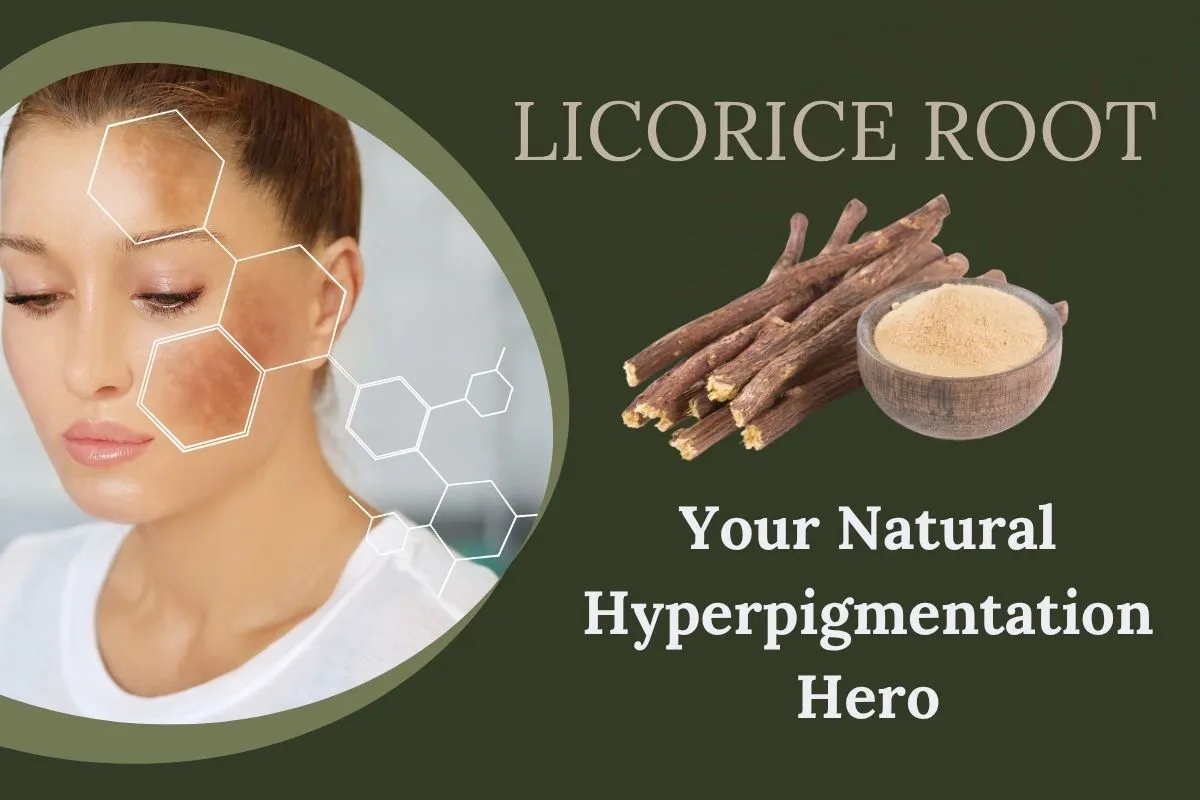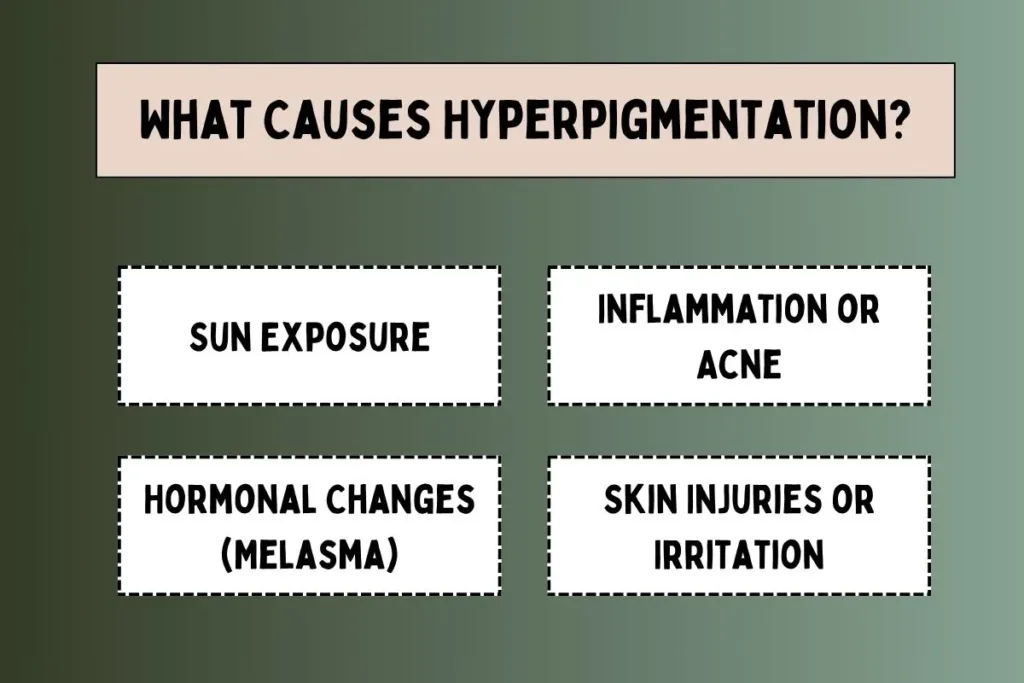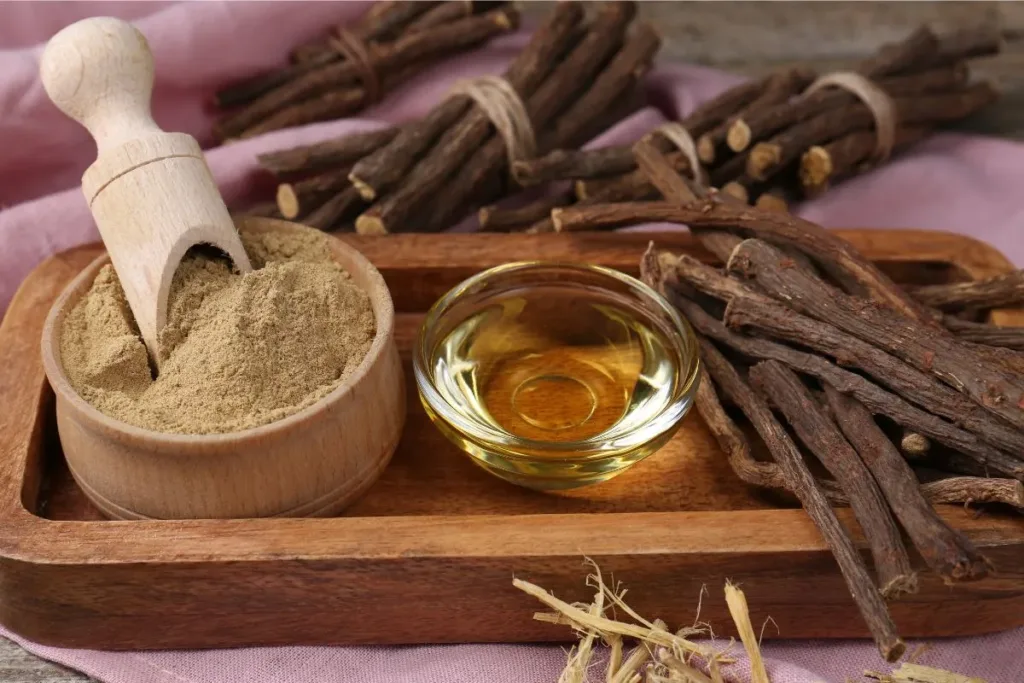No products in the cart.

Struggling with stubborn dark spots or uneven skin tone? You’re not alone and nature might just hold the solution. Among the many botanical powerhouses gaining attention in skincare, licorice root for hyperpigmentation is emerging as a safe, science-backed remedy. Packed with natural brightening agents and anti-inflammatory compounds, this age-old ingredient is redefining what it means to glow naturally. Whether you’re targeting post-acne marks, sun damage, or melasma, licorice root for skin offers more than just skin-deep benefits it nourishes while gently fading discoloration.
But what makes licorice root for skin truly effective? Is it just another trend, or is there solid research behind its brightening magic? In this post, we’ll unpack the surprising science behind licorice extract for skin, explore its powerful bioactive compounds, and show you how to incorporate it into your skincare routine the right way. Get ready to discover why this ancient herb could be your next skin-transforming favorite.
What Causes Hyperpigmentation?

Hyperpigmentation refers to patches of skin that appear darker than the surrounding areas. This condition occurs due to an excess production of melanin, the natural pigment responsible for the color of our skin, hair, and eyes.
The skin doesn’t produce melanin randomly, its production is often triggered by specific factors or environmental stressors. Let’s dive into each one:
1. Sun Exposure:
UV radiation is one of the most common causes of hyperpigmentation. When your skin is exposed to the sun, it increases melanin production as a protective mechanism. Over time, this leads to sunspots or age spots, especially on the face, hands, and shoulders.
2. Inflammation or Acne (Post-Inflammatory Hyperpigmentation, PIH):
After the skin experiences inflammation like acne, eczema, or even a small scratch it can respond by producing excess melanin in the healing area. This results in lingering dark marks long after the original wound or pimple has healed.
3. Hormonal Changes (Melasma):
Hormonal fluctuations, especially during pregnancy, menopause, or due to contraceptive use, can lead to melasma, a type of hyperpigmentation that appears as large patches on the cheeks, forehead, or upper lip. This is more common in women.
4. Skin Injuries or Irritation:
Over-exfoliation, burns, or reactions to certain skincare products can damage the skin and trigger melanin production as it heals.
All these triggers share a common pathway: melanin overproduction in response to stress or damage. This is why the skin may appear uneven, blotchy, or dull. The excess melanin can be persistent, and reversing it takes time and consistent care.
This is where licorice root for hyperpigmentation becomes particularly valuable. It works not by bleaching the skin, but by naturally balancing melanin production and calming inflammation making it an ideal treatment for nearly every cause listed above.
The Licorice Root for Skin Breakdown: What Makes It Work?

Licorice extract for skin, sourced from the Glycyrrhiza glabra plant, has long been used in traditional medicine, particularly in Chinese, Indian (Ayurvedic), and Middle Eastern healing systems. Its rise in modern skincare stems from a growing body of research that highlights its multifunctional benefits, especially in targeting pigmentation, inflammation, and oxidative damage.
Here’s a closer look at the star compounds in licorice root for hyperpigmentation that make it such a powerful ingredient in skincare:
1. Glabridin
- What it is: A flavonoid unique to licorice root.
- How it works: Glabridin inhibits the activity of the enzyme tyrosinase, which is crucial in melanin synthesis. By slowing down melanin production at the source, it helps prevent new dark spots from forming.
- Why it matters: It works similarly to hydroquinone (a standard depigmenting agent), but without the harsh side effects, making it suitable for sensitive skin.
2. Liquiritin
- What it is: Another active compound in licorice root, separate from glabridin.
- How it works: Instead of preventing new pigment, liquiritin helps disperse existing melanin, breaking up dark patches and promoting a more even skin tone.
- Why it matters: This dual action prevention + dispersion makes licorice unique among brightening agents.
3. Licochalcone A
- What it is: A potent antioxidant found in licorice root.
- How it works: Protects the skin from free radicals, reduces redness, and helps regulate oil production particularly beneficial for acne-prone or sensitive skin.
- Why it matters: Inflammation can worsen hyperpigmentation (especially PIH), so calming the skin is essential in reducing and preventing discoloration.
4. Glycyrrhizin
- What it is: A saponin compound known for its sweet taste and anti-inflammatory power.
- How it works: Reduces inflammation, irritation, and redness. It also helps to soothe the skin barrier and support healing, which is essential when treating dark spots or acne-related pigmentation.
- Why it matters: It allows licorice-based products to work effectively without causing sensitivity, making them ideal for daily use.
Synergistic Effect:
While each compound is powerful on its own, the combination of glabridin, liquiritin, licochalcone A, and glycyrrhizin creates a comprehensive skincare solution. Together, they:
- Reduce the formation of new dark spots
- Fade existing hyperpigmentation
- Calm inflammation and redness
- Protect against environmental damage
This is what makes licorice benefits for skin so versatile and why it’s especially effective for individuals dealing with hyperpigmentation, post-acne marks, melasma, and uneven tone all while being gentle enough for sensitive skin types.
Licorice Root for skin vs. Other Skin Brighteners
While there are several well-known ingredients used to treat pigmentation, each comes with unique benefits and limitations. Licorice extract for skin has gained popularity not just for its brightening power, but also for its excellent tolerance and long-term usability. Let’s explore how it stacks up against three common alternatives:
- Hydroquinone: This is one of the most powerful skin-lightening agents and is often prescribed for stubborn hyperpigmentation. However, it comes with a high risk of irritation, especially with prolonged use. Some countries have banned over-the-counter hydroquinone due to potential side effects like ochronosis (a bluish-black discoloration of the skin). While it can be effective, its harsh nature makes it less suitable for sensitive skin or long-term application.
- Kojic Acid: Derived from fungi, kojic acid also works by inhibiting melanin production. It is frequently used in products for skin lightening. However, kojic acid can sometimes cause allergic reactions or skin sensitivity, particularly when used in higher concentrations. People with eczema or reactive skin might find it too aggressive.
- Vitamin C: Known for its antioxidant properties, vitamin C can help brighten the skin and improve texture. However, its major drawback is instability; vitamin C oxidizes easily when exposed to light and air, which can reduce its effectiveness. It also needs to be in the right pH range to penetrate the skin effectively, which not all formulations achieve.
- Licorice for skin pigmentation: Unlike the above, licorice is gentle, soothing, and highly effective over time. Its main compounds, such as glabridin and liquiritin, not only reduce melanin production but also help disperse existing pigment. Furthermore, licorice’s natural anti-inflammatory and antioxidant properties make it ideal for people with sensitive, acne-prone, or reactive skin types. It doesn’t pose the risks of irritation seen with hydroquinone or kojic acid, and it remains stable in most skincare formulations.
In short, licorice benefits for skin offers a balanced, botanical approach to skin brightening ideal for those seeking visible results without compromising skin health.
Scientific Studies Supporting Licorice Root for skin
Multiple studies have validated the efficacy of licorice root for hyperpigmentation:
- A study published in the Journal of Dermatology found that glabridin significantly inhibited pigmentation in UV-induced skin discoloration.
- Research comparing glabridin with hydroquinone noted fewer side effects with licorice extract.
- Clinical trials using liquorice powder for skin showed improvements in melasma and PIH over 4-8 weeks of consistent use.
How to Use Licorice Root for Skin Whitening and Brightening
Whether you’re looking to fade dark spots, correct sun damage, or simply brighten your complexion, incorporating licorice root for skin whitening into your routine can be both simple and highly effective. Here are the most trusted methods and detailed usage tips to help you achieve optimal results:
Serums
These are often the most effective way to deliver high concentrations of licorice extract for skin directly. Look for serums that list “glabridin” or “licorice root extract” high on the ingredient list. Apply after cleansing and before moisturizing to target pigmentation on cheeks, forehead, or acne marks.
Cleansers & Toners
Incorporating licorice for skin pigmentation into your daily cleansing or toning routine ensures your skin is consistently exposed to its brightening and anti-inflammatory properties. A licorice-infused toner can help calm redness while prepping the skin for other treatments.
Face Masks
Weekly face masks containing licorice benefits for skin, it helps provide a more intensive treatment. These masks deliver antioxidants and pigment-fading agents in a single step. Ideal for dull skin or uneven tone, use 1–2 times per week for best results. Use our brightening face mask which contains all herbal natural products including licorice root, katsaraya leaf, saffron and neem.
DIY Options
If you prefer natural remedies, mix liquorice powder for skin with soothing ingredients like honey, yogurt, or rose water. This combination not only brightens the skin but also hydrates and soothes. Apply the mask for 10–15 minutes, then rinse with lukewarm water. Always conduct a patch test before using any new DIY formula, especially if you have sensitive skin.
Consistency is key when using licorice root for skin.. Results typically become noticeable within 4 to 8 weeks, especially when combined with proper sun protection and complementary ingredients like niacinamide or vitamin C.
Pairing Licorice with Other Ingredients
For maximum results, combine licorice skin brightening products with:
- Niacinamide – Boosts brightness and minimizes pores.
- Vitamin C – Enhances antioxidant protection.
- Sunscreen – Prevents further pigmentation.
- Aloe Vera – Calms and hydrates the skin.
Avoid pairing licorice with strong exfoliants or retinoids unless recommended by a dermatologist.
Is It Safe? Potential Side Effects and Precautions
Topical licorice root for skin lightening is generally considered safe and well-tolerated, even for sensitive skin. However, you should:
- Always patch-test first.
- Avoid overuse with oral licorice supplements to prevent systemic effects.
- Consult a dermatologist if you’re pregnant or dealing with chronic skin conditions.
Hudira’s Approach: Natural, Gentle, and Proven
At Hudira, we believe in nature-powered skincare backed by science. Our products are crafted with high-quality, ethically sourced botanicals like licorice extract for skin, chosen for their proven efficacy and skin-friendly profiles. Whether you’re struggling with licorice root for skin dark spots or dullness, our formulations are made to support glowing, healthy skin without harsh chemicals.
Conclusion
The journey to radiant skin doesn’t need to be complicated. By harnessing the potent properties of licorice root for hyperpigmentation, you can achieve even-toned, luminous skin naturally. From blocking melanin production to soothing inflammation, licorice is a quiet but powerful skincare ally.
Try incorporating it into your routine and let your skin experience the magic of gentle yet transformative care.
Ready to transform your skincare routine with the power of plants? Explore Hudira’s natural brightening solutions enriched with licorice root for skin and let nature do the glowing.
FAQs
Q. Is licorice root effective for hyperpigmentation?
Yes! It contains glabridin and liquiritin which inhibit melanin production and fade dark spots.
Q. How long does it take for licorice to show results?
Most users see visible improvements in 4–8 weeks with consistent use.
Q. Can I use licorice root daily on my face?
Absolutely! It’s gentle enough for daily use, especially in serums and toners.
Q. Is licorice suitable for sensitive or acne-prone skin?
Yes. It has anti-inflammatory properties that calm irritation and reduce redness.
Q. Does licorice root lighten the overall skin tone?
It helps even out skin tone by fading hyperpigmentation and brightening dull areas.



Add comment